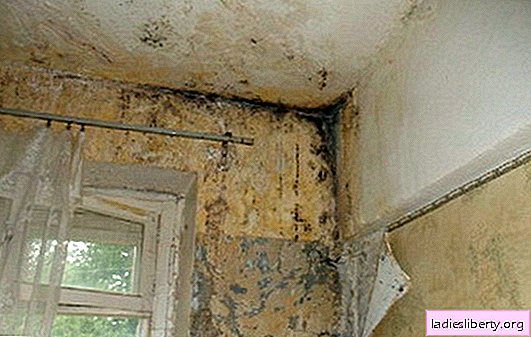
Wet and cold winter months are a risk factor for mold in the house. Mold fungi can cause a number of symptoms and diseases. Especially children and people with weakened immune systems are at particular risk. Experts advise to immediately remove mold in the apartment.
Children and vulnerable groups
Doctors have repeatedly noted that one should not underestimate the health risk of mold at home. Especially children, the elderly and people with a weak immune system are at high risk.
Mold spores and mycotoxins, which are mainly absorbed through the airways, can cause a range of symptoms and diseases. Where there is mold, there are usually bacteria.
Mold can not only cause allergies at lower "doses", but also worsen the functioning of the immune system. The longer a person is exposed to mold, the higher the risk of complications.
Mold causes severe fatigue
Even a small amount of mold can lead to chronic fatigue, headaches, difficulty concentrating, or nausea and vomiting in some people.
In the long term, acute bronchitis or other respiratory diseases - asthma.
Inhalation of mold spores under very adverse conditions can also lead to infection.
People with very weakened immune systems have a risk of developing pneumonia. Although the risk of infection is low, it is still present.
What can help?
To avoid mold in the house, as much as possible, it should be often and long enough to air.
Regular ventilation also helps reduce harmful substances in the living area.
Experts often recommend killing mold spores with alcohol. Ethyl alcohol, 70-80% alcohol from pharmacies, destroys most spores and fungi.
Many underestimate the risk of mold
Nevertheless, many do not see a noticeable danger in relation to harmful fungi. 1 out of 9 people think that mold has very little effect on the health of residents.
Even mold can lead to nausea and vomiting, headaches, fatigue, and difficulty concentrating. In severe cases, chronic diseases arise - asthma, immune disorders or allergies.
Humid environments in buildings are the main cause of mold poisoning. Mushrooms are on wet walls. In addition, mold also settles on floor coverings, carpets, books, clothing or dust. Moisture is mainly caused by improper ventilation or artificial humidity.
In most cases, the mushroom first appears in the bathroom, because when taking a shower or bath, constant high humidity prevails.
Bedrooms very often suffer from mold, because many people in the winter refuse to turn on the heater.
Simple precautions
Living quarters and a kitchen should have a constant room temperature of 20 degrees Celsius. The bathroom should be 21 degrees and the bedroom may be slightly cooler at night with 16 degrees. Transverse ventilation should be performed at least once a day.
Ventilation must be carried out in any weather, because the cold outside air is usually drier than the warm indoor air. If mold has already been detected, the professional should immediately remove the mold so that the fungus does not spread further.
Mycotoxins cannot be removed by roasting or freezing.
If there is even a slight mold on the food in the apartment, it is recommended to immediately throw it away. Mycotoxins cannot be eliminated by roasting or freezing.
Mold in or on food does not have to endanger health. For example, noble cheese cultures are harmless. But some molds can form toxic metabolic products called mycotoxins. They can be toxic even in very small quantities.
A network of mushrooms can often penetrate deep into the affected food. Experts advise regularly checking food supplies at home. If necessary, moldy or expired products must be disposed of.
Mold is “contagious,” so it is recommended that you eliminate any sources of its occurrence. Timely removal of fungi preventing further spread.











